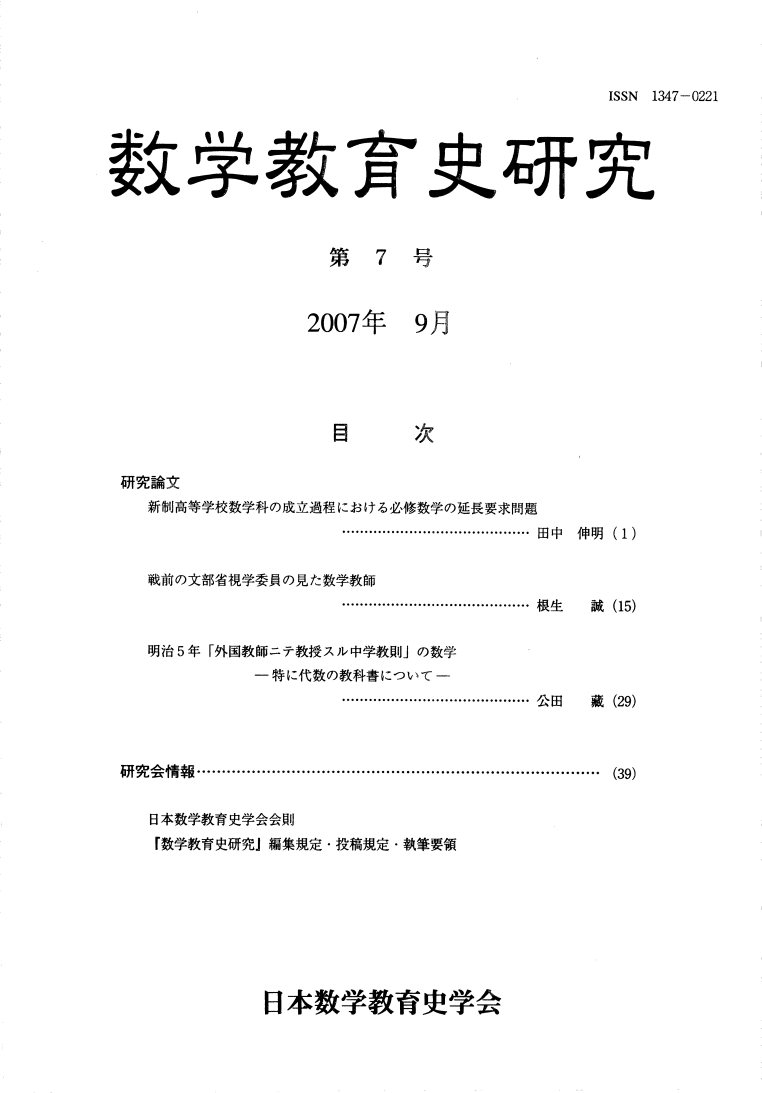7 巻
選択された号の論文の9件中1~9を表示しています
- |<
- <
- 1
- >
- >|
-
2007 年 7 巻 p. 0
発行日: 2007年
公開日: 2023/11/13
PDF形式でダウンロード (37K)
研究論文
-
2007 年 7 巻 p. 1-14
発行日: 2007年
公開日: 2022/03/10
PDF形式でダウンロード (2269K) -
2007 年 7 巻 p. 15-28
発行日: 2007年
公開日: 2022/03/10
PDF形式でダウンロード (2671K) -
2007 年 7 巻 p. 29-38
発行日: 2007年
公開日: 2022/03/10
PDF形式でダウンロード (1519K)
-
2007 年 7 巻 p. 39
発行日: 2007年
公開日: 2023/11/13
PDF形式でダウンロード (29K) -
2007 年 7 巻 p. 40
発行日: 2007年
公開日: 2023/11/13
PDF形式でダウンロード (91K) -
2007 年 7 巻 p. 41-42
発行日: 2007年
公開日: 2023/11/13
PDF形式でダウンロード (159K) -
2007 年 7 巻 p. 43
発行日: 2007年
公開日: 2023/11/13
PDF形式でダウンロード (29K) -
2007 年 7 巻 p. 44
発行日: 2007年
公開日: 2023/11/13
PDF形式でダウンロード (53K)
- |<
- <
- 1
- >
- >|
